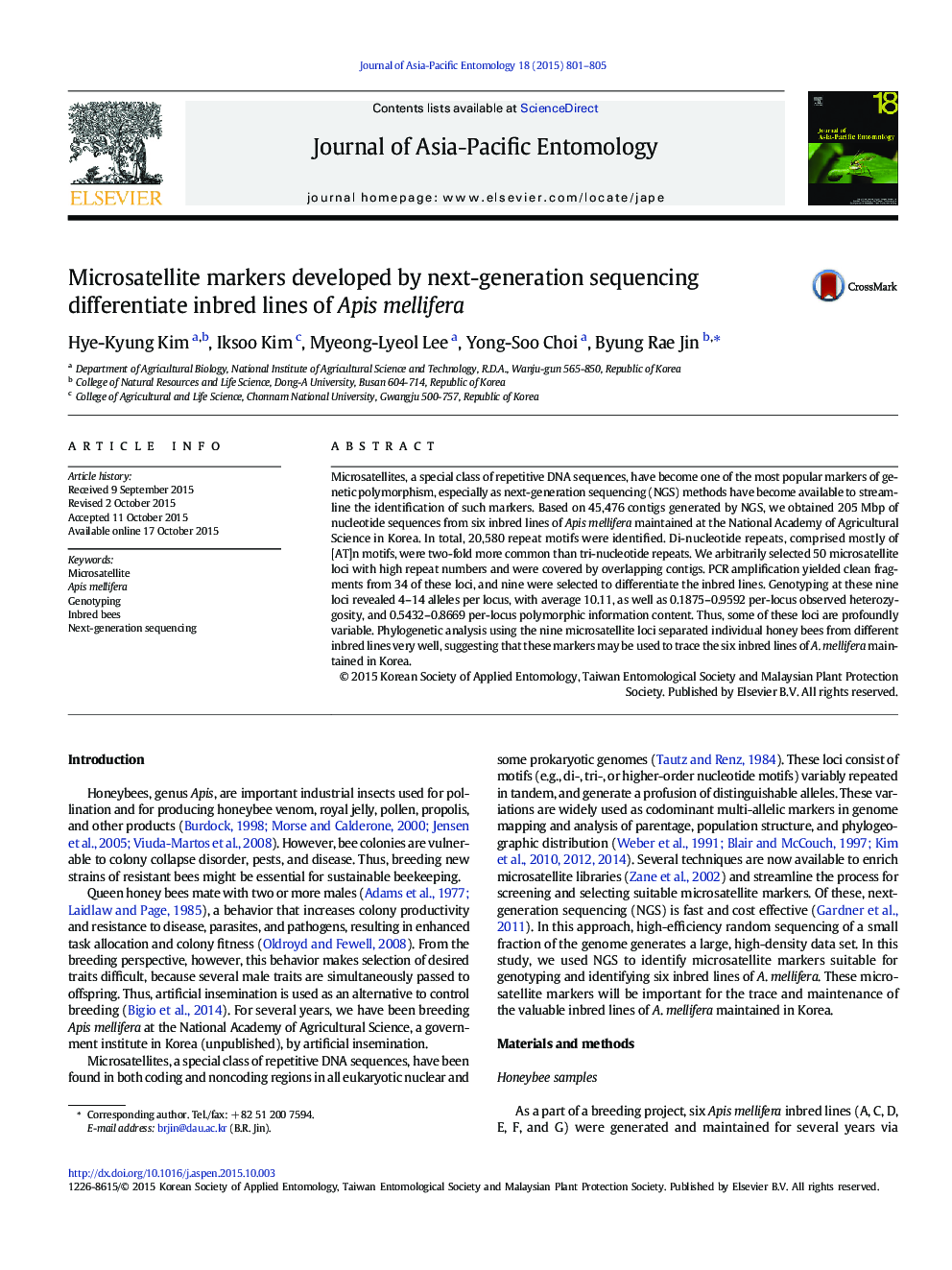| Article ID | Journal | Published Year | Pages | File Type |
|---|---|---|---|---|
| 4524393 | Journal of Asia-Pacific Entomology | 2015 | 5 Pages |
•As a part of a breeding project, six Apis mellifera inbred lines were generated•Nine microsatellite markers were selected using NGS to differentiate the inbred lines.•The result of phylogenetic analysis using the nine microsatellite loci suggested that these markers maybe used to trace the six inbred lines.
Microsatellites, a special class of repetitive DNA sequences, have become one of the most popular markers of genetic polymorphism, especially as next-generation sequencing (NGS) methods have become available to streamline the identification of such markers. Based on 45,476 contigs generated by NGS, we obtained 205 Mbp of nucleotide sequences from six inbred lines of Apis mellifera maintained at the National Academy of Agricultural Science in Korea. In total, 20,580 repeat motifs were identified. Di-nucleotide repeats, comprised mostly of [AT]n motifs, were two-fold more common than tri-nucleotide repeats. We arbitrarily selected 50 microsatellite loci with high repeat numbers and were covered by overlapping contigs. PCR amplification yielded clean fragments from 34 of these loci, and nine were selected to differentiate the inbred lines. Genotyping at these nine loci revealed 4–14 alleles per locus, with average 10.11, as well as 0.1875–0.9592 per-locus observed heterozygosity, and 0.5432–0.8669 per-locus polymorphic information content. Thus, some of these loci are profoundly variable. Phylogenetic analysis using the nine microsatellite loci separated individual honey bees from different inbred lines very well, suggesting that these markers may be used to trace the six inbred lines of A. mellifera maintained in Korea.
Graphical abstractFigure optionsDownload full-size imageDownload as PowerPoint slide
